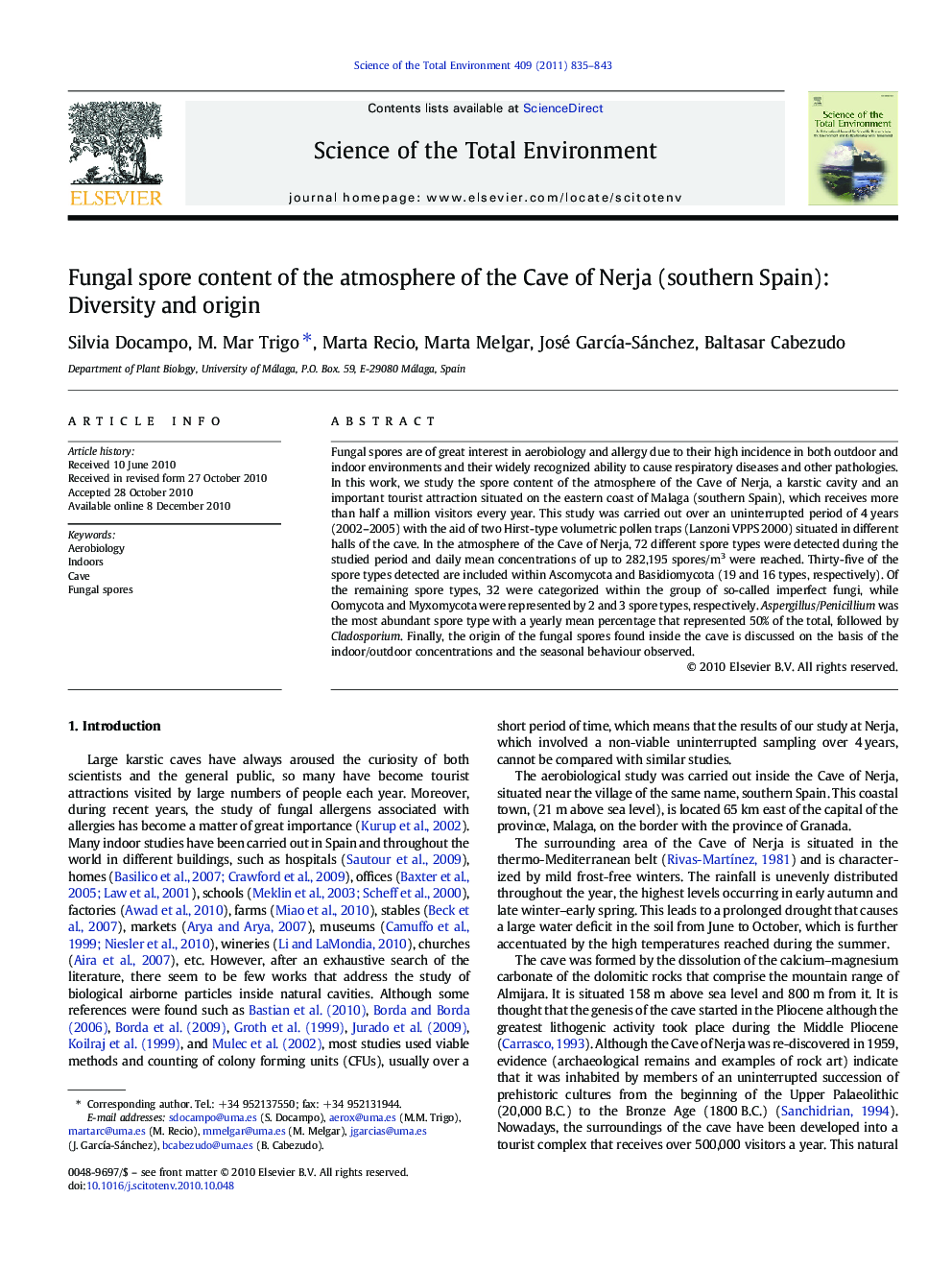| کد مقاله | کد نشریه | سال انتشار | مقاله انگلیسی | نسخه تمام متن |
|---|---|---|---|---|
| 4430622 | 1619858 | 2011 | 9 صفحه PDF | دانلود رایگان |

Fungal spores are of great interest in aerobiology and allergy due to their high incidence in both outdoor and indoor environments and their widely recognized ability to cause respiratory diseases and other pathologies. In this work, we study the spore content of the atmosphere of the Cave of Nerja, a karstic cavity and an important tourist attraction situated on the eastern coast of Malaga (southern Spain), which receives more than half a million visitors every year. This study was carried out over an uninterrupted period of 4 years (2002–2005) with the aid of two Hirst-type volumetric pollen traps (Lanzoni VPPS 2000) situated in different halls of the cave. In the atmosphere of the Cave of Nerja, 72 different spore types were detected during the studied period and daily mean concentrations of up to 282,195 spores/m3 were reached. Thirty-five of the spore types detected are included within Ascomycota and Basidiomycota (19 and 16 types, respectively). Of the remaining spore types, 32 were categorized within the group of so-called imperfect fungi, while Oomycota and Myxomycota were represented by 2 and 3 spore types, respectively. Aspergillus/Penicillium was the most abundant spore type with a yearly mean percentage that represented 50% of the total, followed by Cladosporium. Finally, the origin of the fungal spores found inside the cave is discussed on the basis of the indoor/outdoor concentrations and the seasonal behaviour observed.
Research Highlights
► Fungal spores are of great interest due to their high presence in the air.
► A four-year study was carried out inside a natural cave (Cave of Nerja, Spain).
► 72 spore types were detected, Aspergillus/Penicillium being the most abundant (50%).
► The origin of fungal spores was analysed by indoor/outdoor comparative studies.
► Most spores, excluding Aspergillus/Penicillium, could come from outside.
Journal: Science of The Total Environment - Volume 409, Issue 4, 15 January 2011, Pages 835–843